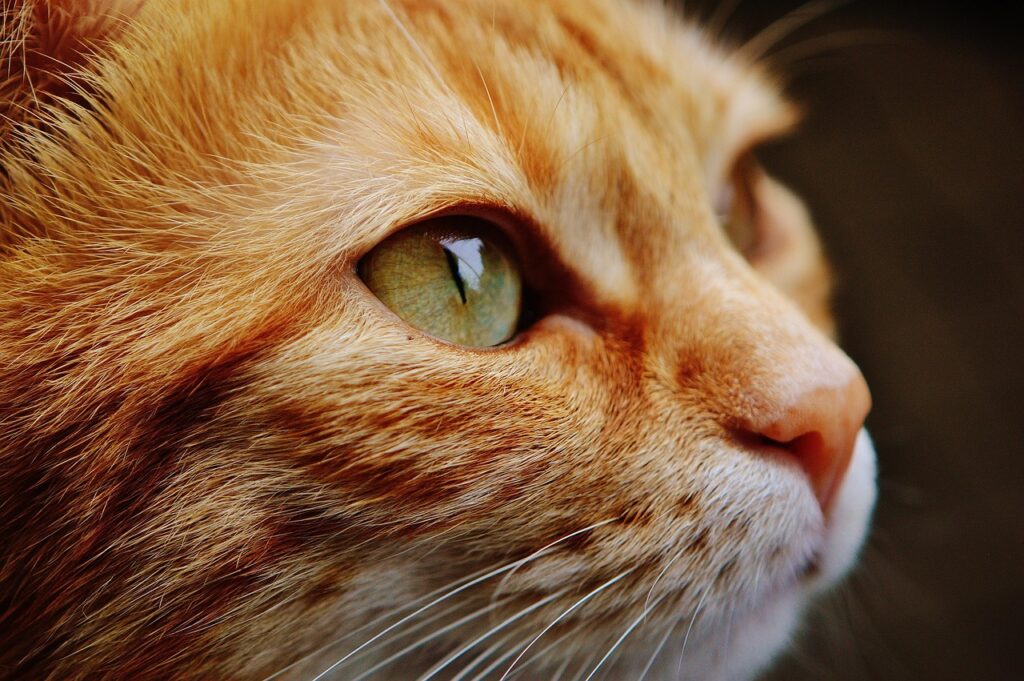
Have you ever wondered what the world looks like through your cat’s eyes? Contrary to popular belief, cats don’t see the world in black and white. Their vision is quite different from ours, particularly when it comes to color perception. While humans can perceive a vast spectrum of colors, cats have a more limited but specialized visual system that has evolved to serve their natural hunting behaviors. This article explores the fascinating world of feline vision, specifically focusing on cats’ ability to perceive colors and how it shapes their interaction with their environment.
How Cat Vision Differs From Human Vision
Humans and cats have fundamentally different visual systems, which evolved to serve different purposes. The human eye contains three types of cone photoreceptors that allow us to see a rich spectrum of colors. Cats, however, are dichromatic, meaning they have only two types of cone cells in their retinas.
This difference in cone cells means that cats perceive colors quite differently than we do. While humans can see the full rainbow of colors, cats primarily see blues and greens with greater clarity, while reds and pinks appear more greenish to them. This limitation in cat color vision is balanced by other remarkable visual adaptations that benefit their natural hunting behaviors.
The Science Behind Feline Color Perception
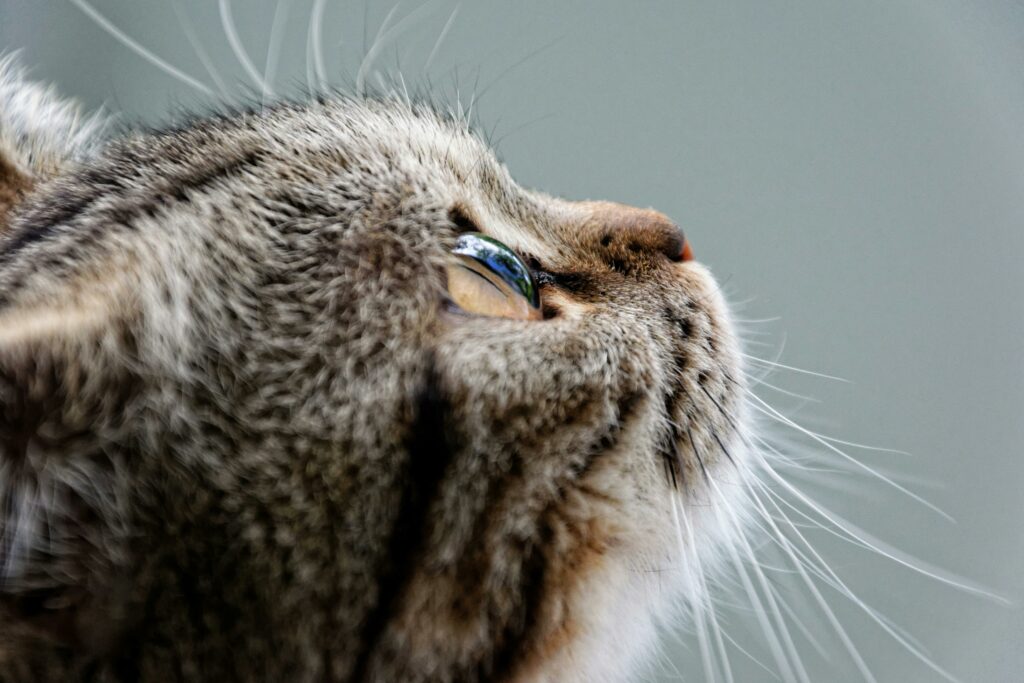
The retina of the eye contains two types of photoreceptors: rods and cones. Cones are responsible for color vision and function best in bright light, while rods handle low-light vision but don’t distinguish colors.
Human retinas contain three types of cones, sensitive to red, green, and blue wavelengths of light. In contrast, cats have primarily blue and green cones, making their color vision similar to a person with deuteranopia, a form of red-green color blindness. This means cats can distinguish between blues and greens but have difficulty with reds, oranges, and browns.
Research published in the Journal of Vision suggests that cats see colors as more muted compared to how humans perceive them. Blues and violets appear similar to how we see them, but reds, oranges, and browns all appear as different shades of blue or gray.
Evolutionary Advantages of Cat Vision
Why would cats evolve with limited color perception? The answer lies in the trade-offs that occurred during their evolution as predators. Cats sacrificed some color vision capabilities for adaptations that significantly enhance their ability to hunt.
One such adaptation is the abundance of rod cells in their retinas. While humans have more cones for color detection, cats have up to six to eight times more rod cells. This gives cats superior night vision and the ability to detect even the slightest movements—a critical advantage for catching prey in low light.
Additionally, cats possess a reflective layer behind their retinas called the tapetum lucidum. This structure reflects light back through the retina, giving the photoreceptors a second chance to detect the light. This is why cats’ eyes appear to glow in the dark and why they can see in light levels six times dimmer than what humans require.
Common Misconceptions About Cat Vision
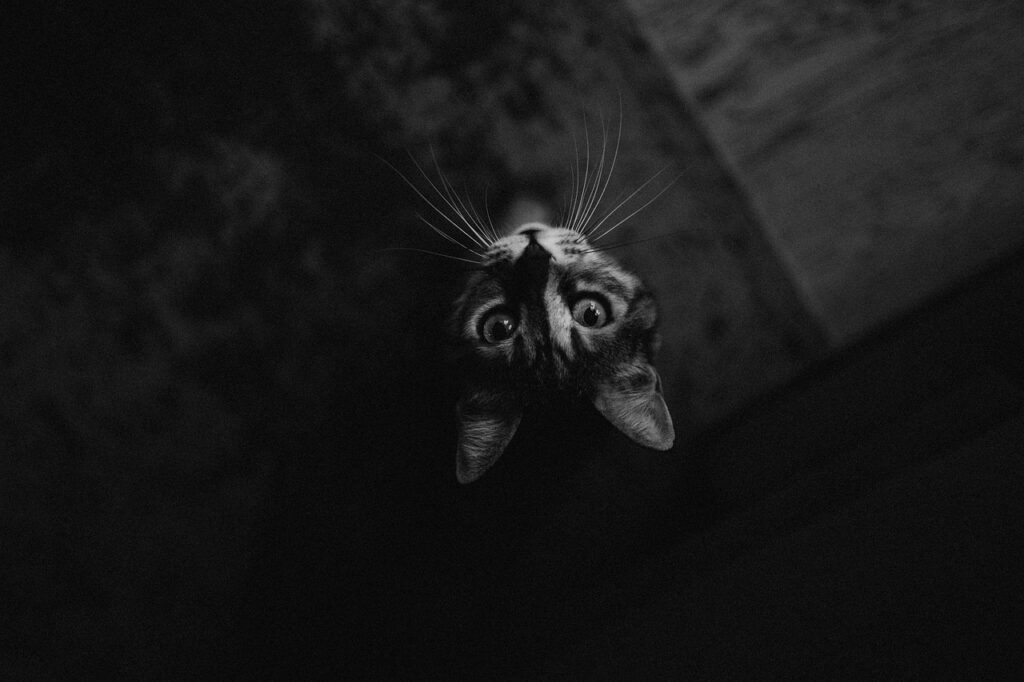
A persistent myth is that cats see only in black and white. This misconception has been thoroughly debunked by scientific research. While cats don’t see the full range of colors that humans do, they can definitely perceive certain colors, particularly blues and greens.
Another misconception is that cats have poor daytime vision. While it’s true that cats’ vision is optimized for low light, they can still see quite well during the day. Their pupils can contract to tiny slits to protect their sensitive retinas from excess light, allowing them to function effectively in a wide range of lighting conditions.
How Cat Color Vision Affects Their Behavior
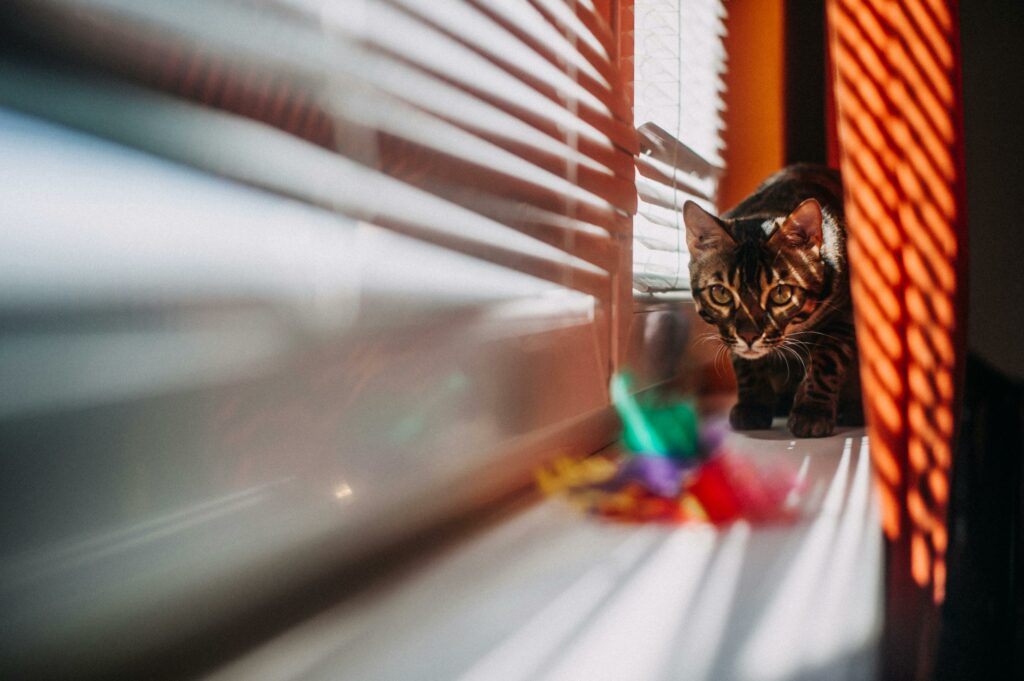
Understanding cat color vision can help explain certain behaviors and preferences. For instance, cats are more likely to respond to toys in blue or green hues because these are more visually distinctive to them. Red toys, on the other hand, might appear gray or brown to your cat, making them less visually stimulating.
This color perception also impacts how cats interact with their environment. They rely more heavily on motion detection and contrast sensitivity rather than color identification. This explains why cats can be intensely focused on a small moving object but might walk past a stationary one of the same size.
Comparing Cat Vision to Other Animals
Cats fall somewhere in the middle of the animal kingdom when it comes to color perception. Dogs, like cats, are also dichromatic. Birds, on the other hand, often have tetrachromatic vision, meaning they can see four primary colors, including ultraviolet light.
Primates, including humans, developed trichromatic vision, likely as an adaptation to identify ripe fruits among green foliage. Cats, as primarily carnivorous hunters, had different evolutionary pressures that favored motion detection and night vision over color discrimination.
Caring for Your Cat Based on Their Visual Perception
Understanding your cat’s visual world can help you create a more enriching environment. Consider these practical applications of what we know about cat color vision:
- Choose toys in blue or purple colors, as these are more visible to cats
- Use contrasting colors in your cat’s environment to help them navigate spaces
- Provide adequate lighting transitions, as cats need time to adjust between bright and dim conditions
- Create visual interest through movement rather than relying solely on color
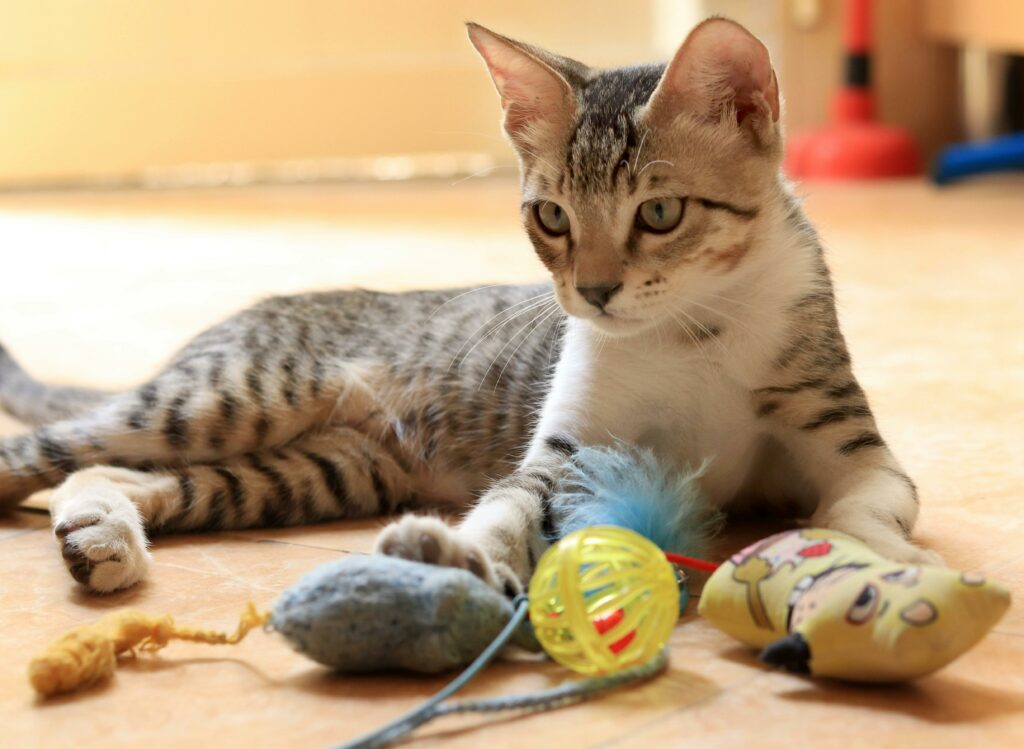
Conclusion
Cat color vision, while limited compared to human perception, is perfectly adapted to their needs as predators. Their ability to see blues and greens, combined with their exceptional night vision and motion detection capabilities, creates a visual world uniquely suited to their lifestyle. By understanding how our feline friends perceive colors, we can better appreciate how they experience the world and create environments that cater to their visual strengths.
The next time you watch your cat intently tracking a toy or gazing out the window, remember that they’re experiencing a world of color that’s different from ours, but no less fascinating.
References
What Colors Can Cats See? – https://noblevetclinic.com/blog/what-colors-can-cats-see?
Catalyst: Seeing Through the Eyes of a Cat – https://www.researchgate.net/publication/236973463_Catalyst_Seeing_Through_the_Eyes_of_a_Cat
ABSENCE OF COLOR VISION IN CAT – https://journals.physiology.org/doi/abs/10.1152/jn.1954.17.3.289
Share this:
- Click to share on WhatsApp (Opens in new window) WhatsApp
- Click to share on Facebook (Opens in new window) Facebook
- Click to share on LinkedIn (Opens in new window) LinkedIn
- Click to share on Pinterest (Opens in new window) Pinterest
- Click to share on Tumblr (Opens in new window) Tumblr
- Click to share on X (Opens in new window) X
- Click to share on Reddit (Opens in new window) Reddit
- Click to share on Telegram (Opens in new window) Telegram
- Click to email a link to a friend (Opens in new window) Email
- Click to print (Opens in new window) Print






























